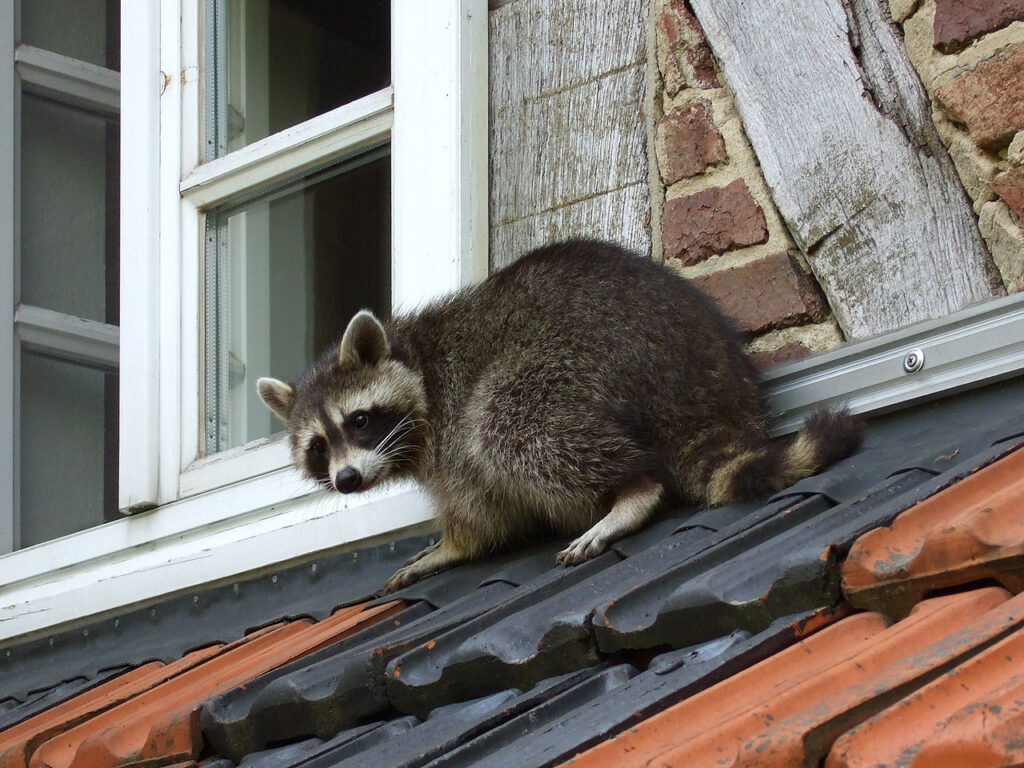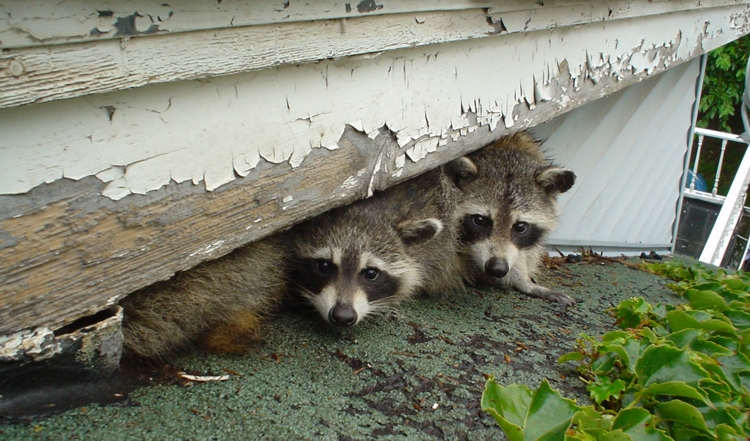As urban populations continue to expand, wildlife must adapt to new environments and city-dwellers must learn how to coexist with these animals. One such adaptable species is the raccoon, a familiar and oftentimes dreaded sight to those living in Barrie. While they were once predominantly forest-dwellers, these intelligent animals have learned to thrive in cities, scavenging for food in dumpsters and raiding gardens for a quick snack. But with raccoons come problems, namely when they decide to make our homes their own.
If you find yourself in need of raccoon removal in Barrie or wondering how to get rid of raccoons around your house, it’s important to understand how these animals have adapted to urban life and the best practices for keeping them at bay. This article from our experts at Skedaddle delves into the ins and outs of their behaviour, helping you effectively manage these resourceful and cunning animals.
Adapting to the Hustle and Bustle: Raccoon Behaviour in Cities
Raccoons are remarkably cunning and adaptive animals, even when thrust into an environment as challenging and adverse as a bustling city. In cities, they have readily modified their behaviour and lifestyle to take full advantage of the human-created, urban environment and its steady supply of food and shelter.
One way this manifests is through their nocturnal foraging habits. They are primarily nocturnal animals and urban living only emphasizes this behaviour. Taking advantage of the quieter night hours, they forage for food in what most of us would consider waste. From leftover pizza to tossed-out vegetables, our rubbish bins are a veritable feast for these opportunistic eaters.
Another clear illustration of their adaptability is their choice of dens. In the wild, they are known to make their homes in hollow trees, logs, and underbrush. In cities, however, they have learned to exploit man-made structures. Attics, chimneys, and abandoned vehicles – anywhere that provides safe, warm, and quiet shelter is a potential den.
The Challenges of Raccoon Life in the City
Despite their adaptability, urban life is not without its challenges for these animals. Their opportunistic feeding habits and places of shelter often bring them into direct conflict with humans. Their foraging often results in overturned trash cans, damaged property, and disturbed peace and quiet – a nuisance to many homeowners.
Then there’s the risk of disease. They are known carriers of several dangerous diseases, including rabies, a serious concern for city-dwellers and their pets. It’s important to remember, that while it might be tempting to view these misadventures as cheeky or amusing, interactions with them can pose a significant health risk.
In short, understanding how they have adapted to urban life is key to managing them effectively – with respect for their resilience and without causing them undue harm. Raccoons are part of the urban ecosystem, and while they may push the boundaries of our urban spaces, their behaviour is merely a response to the opportunities that our towns and cities provide.
Interacting with Raccoons: Urban Encounters
Living in close quarters with these animals is a reality for many urban dwellers. More often than not, these encounters are harmless, showcasing their high adaptability and intelligence. However, there are instances when these agile animals become a significant disruption, especially when they invade your home or become too accustomed to human interaction.
The key is to establish boundaries between your living space and theirs. Respecting their environment and habitat is as important as protecting your own. They are usually on the lookout for food, shelter, and a safe spot for breeding. The issue arises when your home starts to look like the ideal dwelling for these needs.
Their high intelligence and nimbleness can make them daring invaders. Compost bins, garbage cans, and gardens can become primary targets. These city-night marauders are gifted climbers, adept at scaling fences, getting onto rooftops, and even entering your house via the chimney or an open window.

Non-Harmful Methods to Discourage Urban Raccoons
Prevention is undoubtedly the best tactic when dealing with raccoons. There are proven proactive measures that can be taken to ensure that your home and surrounding areas aren’t appealing to these inquisitive animals.
- Securing Food and Waste
One of the primary attractions for these animals is the ready availability of food in urban settings. From garbage cans to compost bins, these areas provide a veritable buffet for our raccoon friends. To discourage them, ensure your trash cans and compost bins are secure. Use raccoon-proof lids and make sure they are tightly closed at all times.
- Pet Food and Water
Leaving pet food and water outdoors can also attract raccoons. If you have pets, always bring in their food and water dishes at the end of the day. It might seem like a small step, but it can greatly contribute to making your home less appealing to them.
- Sealing Entry Points
Did you know that raccoons are adept climbers and can squeeze through pretty narrow spaces? To prevent incursion, seal off any potential entry points in your home. Check your roof and attic for any loose shingles or boards, any holes or cracks in the siding, and open chimney flues. Remember, a determined raccoon can make use of very small openings to gain access to warm and safe nesting areas.
- Scaring Tactics
These animals are naturally scared of humans. Installing motion-activated sprinklers or lights can be a deterrent. But remember, these intelligent animals quickly learn the difference between a real threat and a false one, so it’s best to vary your tactics regularly.
Dealing with raccoons in an urban setting can be challenging, but by taking these measures, you can maintain a safe and secure environment. And remember, if you’re dealing with a persistent problem, don’t hesitate to reach out to us at Skedaddle. We’re your local wildlife control experts.
Call Skedaddle for Raccoon Removal in Barrie
When these animals are getting too comfortable in and around your home, it’s time to turn to professionals for wildlife removal services. Skedaddle Humane Wildlife Control specializes in humane, efficient, and effective raccoon removal.
Raccoons are often underestimated in their problem-solving skills and adaptability, making them challenging to deal with, especially when they’re feeling defensive. At Skedaddle, our experienced staff understands these complexities and adopts a hands-off approach to eviction and exclusion procedures, ensuring both the safety of the animal and the homeowner.
Humane Wildlife Control
As part of our humane wildlife control approach, Skedaddle uses exclusion techniques that provide a safe and stress-free route for the animals to vacate your property. Each strategy varies depending on your home’s structure, point of entry, and the individual animal’s behaviour. We aim to ensure that every raccoon is treated with the warranted respect that all animals deserve while solving your wildlife conflict.
We believe in eviction, not extermination.

The Skedaddle Way
Skedaddle’s wildlife control program follows a three-step process. First, our technicians assess the situation and identify all potential entry points. The second stage involves the humane removal of the problem wildlife. This is done through our exclusion processes that allow animals to leave but not re-enter the structure. The third and final step is to ensure the future safety of your home and prevent any future wildlife conflicts.
Post-Eviction Services
Skedaddle’s job doesn’t end with the removal of uninvited wildlife. We also provide services like cleaning up feces, disinfecting areas where raccoons have nested, and providing you with techniques to coexist with the wildlife that shares your urban environment. We also guide you on post-eviction raccoon proofing of your home to minimize any future encounters. In addition, we’re here to help with any damage repair that may have been caused by these agile visitors to your premises.
Remember, when you need raccoon removal in Barrie, call on Skedaddle. We’re here to provide a humane solution to your wildlife problems. We help you reclaim your space while letting wildlife remain wild.



